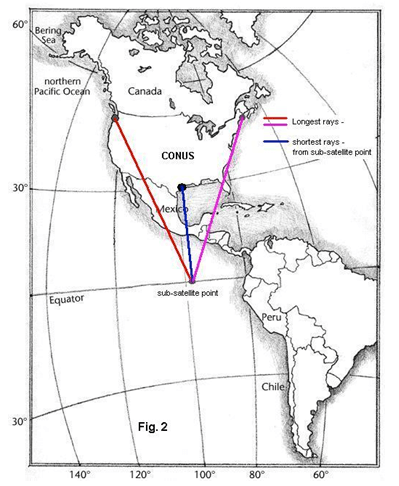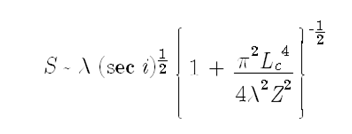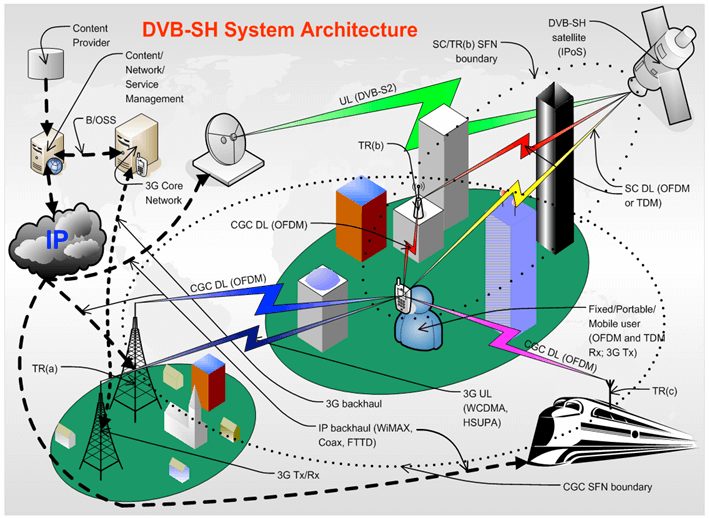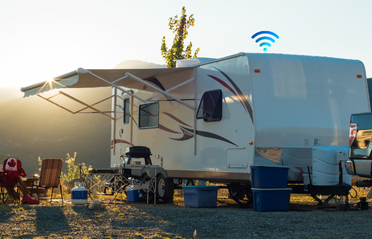This document outlines the techniques used and assumptions made to provide a rough estimate of the downlink budget of the Complementary Ground Component (CGC) portion of a DVB-SH system. The reader is assumed to have some understanding of the DVB-SH [1] system as well as knowledge of satellite link budgets.
Background
The DVB-SH (Digital Video Broadcasting – Satellite to Handheld) system is the latest of a series of specifications that enables broadcast quality video to be relayed directly from a broadcast network, and displayed on a handheld/portable/mobile device. In the case of the DVB-SH system, the broadcast network is made up of two components: The Satellite Component (SC) relays signals directly from the satellite to the User Equipment (UE), which may be fixed, portable or mobile. The Complementary Ground Component (CGC), on the other hand, is made up of a mesh of relay stations, which receive direct transmissions from the satellite system, and then “forward” the signals onto UE units within the coverage area of the particular CGC unit. Passive CGC units typically act as “relays” which perform only power boosting, while active CGC would also be involved in “Over-The-Air” (OTA) Error Correction and Local Content Insertion (LCI).
Scope of Study and Analysis
This document provides a brief overview of the issues related to link budget analysis of the SC and CGC portions of a typical DVB-SH system employing TR(b) type transmitters [3].
System Architecture
The system under consideration is depicted in Fig. 1. It consists of an uplink path between an earth station and the satellite, and a downlink path between the satellite and the CGC unit, usually called a “relay unit” or “gap filler”. The terrestrial link between the CGC and the UE is also considered. The ensuing analysis shall cover only the downlink and terrestrial link budgets. The analysis of the uplink path is beyond the scope of this article.
The ensuing analysis shall take into account losses in the satellite transponder subsystem, such as Input Back Off (IBO) and Output Back Off (OBO), losses due to Power Amplifier (PA) non-linearity, losses due to cloud cover, climatic conditions (various forms of precipitation) and relative angles of elevation and azimuth between the gap-filler and the satellite.
Beyond frequency translation and possible signal amplification at the relay station, signal losses due to multipath, scattering and precipitation (and other weather conditions) shall also be considered in the terrestrial link.
Irrespective of whether signals are directly fed from the satellite to the UE (SC) or relayed via a earth relay station (CGC), the receiver essentially comprises a Low Noise Block (LNB) which shifts the carrier from the S band to an Intermediate Frequency (IF) of about 1 GHz, and an additional analog tuner which down-converts to zero IF and provides the I and Q components.
A digital demodulator provides carrier recovery, symbol timing adjustment, equalization, error correction and demultiplexing.
All power levels are measured in dB.
Assumptions
Following are the assumptions made with regards to the type of satellite link used in the system architecture [18], [19]:
a. The earth is assumed to a perfect sphere, with a constant radius at every latitude north or south of the equator.
b. The service area of the system is the entire Contiguous United States (CONUS) comprising the lower 48 states of the USA (66° 56’ 58.60’’ W to 124° 43’ 58.92’’ W, 49° 0’ 0’’ N to 24° 53’ 50.52’’ N).
c. The satellite has been placed in a Geosynchronous Earth Orbit at an altitude of (approximately) 35788.925 km AMSL.
d. The inclination of the orbital plane of the satellite is 0 degrees, and the path traversed by the satellite is assumed to be circular (eccentricity = 0).
e. The sub-satellite point is set at the median longitude of the CONUS (95° 50’ 28.76’’ W, 0° N)
f. The shortest (blue) and longest (red and magenta) rays from the satellite to possible earth station locations are mapped in the diagram below. The link budget is calculated for both extremes.
g. The downlink carrier frequency for the SC has been set at 2.1 GHz (lower S Band). Likewise, the CGC has been set at an arbitrary carrier frequency of 2 Ghz (at the center of the UMTS2100 band) [20].
h. The CGC employs a TR(b) class transmitter (fixed “gap filler”). The gap filler is a passive device which forwards the DVB-SH stream with no carrier up/down conversion.
i. Since the uplink is of no interest in a DVB-SH system, uplink frequencies and related link budgets are not assumed here.
Satellite Component
The basic equation used in estimating the link budget for a satellite-to-earth station downlink is a function of the transmitted power (in dBm), back-off levels and total signal path loss and system temperature. The satellite transponder radiates power across all carriers (1, 2, ….., i), which is received by all receivers (1, 2, ….., j) [18]

where,
Pmax = peak Effective Radiated Power (ERP, in dBm) of the satellite transponder channel of interest (Pmax = Psat)
Bo,o = Back off (from saturation point) of the total output power of the satellite transponder. The total average satellite power is now Psat = Pmax – Bo,o
βAiPi = percentage of Psat assigned to the carrier of interest
G/T = this is the figure of merit for the effective receiver antenna gain (dB) against the received system noise temperature (°K, dB) at the particular carrier frequency
G = this is the antenna gain (in dB), which accounts for the size of the receiver dish and component losses at a particular received frequency
κ = Boltzmann’s Constant (-198.6 dBm/°K-Hz)
LTj = Total losses in the receiver link (this includes free space loss, Ls, antenna pointing loss, atmospheric and sun-outage losses, precipitation losses, radome losses, for earth station j)
(C/No)ij = this is the Carrier-to-Noise Power Spectral Density (psd) for the ith carrier received at earth station j
 Fig. 2
Fig. 2
Carrier Frequency
The DVB-SH SC sub-system operates in the S band below 3 GHz. We assume an operating frequency of 2.1 GHz for the satellite link.
Path Losses
The total path loss in the downlink comprises of several components, including spreading (1/r2) loss, free space loss (Ls), ionospheric scintillations, climatic attenuation, sun outage factors etc.
Free Space Loss
The major component of atmospheric loss is Free Space Loss, Ls, which may be modeled as [18]:

Here, r is the total slant range from the satellite to the location of the earth station or mobile receiver. Assuming the positioning of the satellite and earth stations for the extreme case in Fig. 2, slant range, r may be modeled as (using the law of cosines) [19]:
where,
RE = mean radius of the earth, 6378.1 km
h = orbital height of a geostationary orbit at the equatorial plane, 35788.925 km
φg = latitude of the earth station or location of mobile receiver; here, we assume the receiver to be placed at the latitudinal extremities of the CONUS (49° 0’ 0” N and 25° 50′ N)
Δλ = the difference in the longitudinal positions of the sub-satellite point (at the equator) and the earth station/mobile receiver; in our case, we assume this to range from 0° to (95° 50’ 28.76’’ W -66° 56’ 58.60’’ W =) 28.892°
Assuming these values, the slant range ranges from (approx.) 36532.1736 to 38855.8001 km, which gives a free space loss of (approx.) 190.5 dB.
Attenuation due to precipitation
Rain and other forms of precipitation have a dual effect on the overall C/No figure of the link: It raises the overall system temperature, T, and hence the G/T figure of merit of the overall link (see Antenna Figure of Merit below), besides causing attenuation of the carrier, thereby contributing to the overall loss, Ls. It is generally assumed that the attenuation due to all forms of precipitation is log-normally distributed (slow and flat fading).
However, the attenuation due to water vapor, rain and snow is heavily frequency dependent, and is almost negligible in the S band; in fact, graphs for Mie Extinction rates [19] (based on Laws and Parsons distribution of rain rates) do not contain useful data for frequencies below 10 GHz. Thus, the overall attenuation due to all forms of precipitation in the S band may be considered to be negligible, and combined as part of the miscellaneous attenuation component of ~ 2 dB (1.52 dB due to models by Lin and Ippolito et. al. [19]).
Oxygen and Water Vapor
Gaseous absorption is very severe in the K and higher bands, but is generally ignored (» 0.1 dB) in the S band [19].
Ionospheric Scintillations
Atmospheric scintillations in the F layer of the earth’s ionosphere are short-term variations in the refractive index of the medium, which cause alternating signal fading and enhancements. The overall attenuation (negative or positive) may be modeled as a log-normal distribution.
These scintillations are generally observed in the sub-auroral to polar and magnetic equatorial latitudes, and mostly in the night. The attenuation due to this phenomenon may be empirically modeled as [19]:

where,
Z = slant distance to the ionospheric irregularity in the F layer (Z lies between 400 km and 1600 km, typical values of Z is » 600 km)
Lc = irregularity autocorrelation distance in the medium (typical value of Lc is » 1 km)
i = zenith angle at the ionospheric intersection point
λ = wavelength
S = Scintillation index
For short wavelength signals, like transmissions in the S band, the scintillation index may be modeled as a function of λ2; a typical value that may be assumed for a 2.1 GHz carrier is 2 dB.
Antenna Figure of Merit
The value of G/T (in dB) is a measure of the overall gain of the receiving antenna with losses due to an-tenna and system temperature accounted for in the computation.
The receiver antenna gain may be computed by the following empirical formula [19];

where,
GR = Gain (in dB) of the receiving antenna
η = Antenna efficiency (a typical value of η is assumed to be 0.6)
Rf = carrier frequency
Da = Diameter of the receiving antenna dish
For a 2.1 GHz carrier received by a 5 m dish, the receiving antenna has a gain factor of 218.61 dB.
A typical microwave receiver front-end block schematic is shown below:

The overall system temperature, Ta, as measured at the antenna input is given by the Friis’ equation of the general form [19]:
where,
T0 = ambient temperature of the lossy components (290 °K)
L = Loss factor of waveguide and cable components, antenna pointing losses
TR = Effective receiver temperature (at input terminal) (assuming a cooled preamp, this is assumed to be 100 °K)
Ta = Antenna temperature (80 °K)
F = noise figure of the modem (0.7)
Ts = system temperature of the system (assuming tandem connections)
Assuming a waveguide and cable loss factor of 4 dB (x 2.5) and a system temperature, Ts of (approx.) 114 °K, the G/T figure of merit is 21 dB/°K.
During heavy precipitation, the individual ambient and/or equivalent temperatures fall below their “clear sky” values due to the absence of Tsun. However, due to the heavy attenuation in the line of sight signal path, the effective system temperature, Ts may rise by about 200 °K, which is equivalent to 4.5 dB.
It is assumed that the effects of “sun-outage” is statistically improbable over a given period of time (say, 1 year), and is also mitigated by assuming an antenna with a beamwidth larger than the solid angle sub-tended by the sun (1/2° squared) at the latitudes of interest.
Hence, we assume an equivalent G/T of 26 dB/°K, including margins.
Satellite Transponder Back Off
The dominant source of non-linearities in the RF link is the Traveling Wave Tube Amplifier (TWTA) which acts as the backbone of the amplification sub-system in the satellite. In order to boost the signal level of the satellite transponder (so that the received signal is above the general noise floor of the RF link), the input power level of the transponder may be pushed into the saturation region of the operational characteristic of the TWTA. The amount of non-linearity is a function of the power level, and the operational point may have to pushed “back” along the locus of the characteristic curve so that any instantaneous signal amplitude variations do not lie in the “non-linear” saturation region, thereby reducing the occurrence of intermodulation components, which may increase the effective bandwidth of the transmitted signal and interfere with neighboring channels.
Typically, we assume a “Back Off” factor of 3 dB to push back the operation point to the linear region of the operation characteristic of the TWTA [18], [19].
Choice of Modulation and Constellation Scheme
Consider the typical sinusoidal input signal to the TWTA of the form:

The output of the TWTA is of the form:

where the non-linear modifiers may be parameterized using the Saleh Model [13]:

where ar, br, aφ and bφ are the parameters of the Saleh model. The amplitude and the phase of the signal is modified as a function of the amplitude of the signal envelope, r(t). As the parameterized amplitude, A(.) and phase, φ(.) are functions of r(t), the shape of a square constellation (such as 16QAM and 64QAM) is rounded at the edges and rotated along the primary axis. This results in a non-uniform spacing between individual points in the constellation. Circular constellations (such as 16APSK and 32APSK) that have a constant modulus, on the other hand, are not significantly effected by the parameterized amplitude and phase distortions [13].
Constellations which are less densely packed (such as QPSK/4QAM) are less susceptible to amplitude variations (of the form A(.)) than higher order constellations such as 64QAM.
Hence, it is recommended to use circularly symmetric constellations (APSK family) rather than QAM constellations. Since higher data rates for DVB-SH dictate the use of higher order modulations (32APSK over QPSK or 16APSK), it is assumed that an additional “back off” of 1.5 dB is incorporated in the link budget.
Co-channel interference from neighboring satellites
Additional factors that may be considered in the link budget computations include:
- Interference from side lobes of earth station; this is in direct proportion to the power level of the receiver antenna, and may generally be assumed to be negligible in case of mobile receivers.
- Cross polarization signals from other transponders of the same satellite.
- Interference from terrestrial microwave links.
- Interference from adjacent satellites which may operate in the side-lobe region of the satellite’s spectrum band.
- Multicarrier intermodulation effects due to non-linearities in the TWTA.
Carrier intermodulation effects require an additional power level of 17 dB to be factored into the link budget. Likewise, adjacent satellite C/NI in the downlink is 43 dB (under clear sky conditions) and Cross polarization losses in the downlink path require an additional 25 dB [13].
Complementary Ground Component
While operating in the DVB-SH-B mode, the CGC component of the terrestrial link comprises a fixed “gap filler” base station antenna (TR(b) type transmitters), and an OFDM PHY layer links it to a MSU.
The main purpose of the CGC component of the DVB-SH system is to extend the reach of the original satellite signal to users who may be out of reach of the satellite spot beam due to coverage or urban canyon issues. A major attraction of the frequency planning adopted by the DVB-SH specification is the wealth of experience gathered by 3G operators world wide in transmission of video content over their UMTS2100 networks, which operate in the 1.9 to 2.2 GHz range. Hence, there is a very shallow learning curve in configuring and optimizing the CGC for video broadcasts [20].
Gap Filler Base Station
Gap filler stations may be fixed or mobile terrestrial receivers which act as relays for “forwarding” the origi-nal satellite signal to mobile and/or fixed terrestrial receivers known as Mobile Subscriber Units (MSU).
Besides free space losses and interference from neighboring transmitters and channels, the biggest source of interference in this section of the link is Doppler shifts (due to relative motion between the gap filler and the mobile receiver) [13].
Down-Converter
It is typically assumed that passive downconverters do not introduce noise into the overall system.
Antenna Figure of Merit
Typical values of gap filler transmitter antenna figure of merit is 30 dB/°K (assuming a system tempera-ture, Ts of 114 °K (≡ 3 dB/°K) and including gain factors of 7 dB and 26 dB for the antenna assembly unit and Low Noise Amplifier (LNA) block, respectively) (cf. 2.4.3 on how to arrive at a typical value of receiver (GR) or transmitter (GT) gain and front-end system temperature, Ts).
The typical value of the gain of a receiver antenna in a low power hand held device ranges from (approx.) 5 dB (for omni-directional antennas) to 13 dB (for directional antennas, after accounting for a pointing loss of 2 dB). A mobile receiver is usually devoid of any cables and waveguides, and hence losses due to these factors may be ignored. Moreover, the typical operating temperature of the devices is 290 °K (room temperature). A typical value of G/T that may be assumed in this case is 3 dB/°K (omni-directional) to 10 dB/°K (directional).
Sun outage effects can be ignored for both the gap filler transmitter and the mobile receiver antenna, since the probability of either (or both) the antennas being within the disc of the sun is highly improbable [18], [19].
Terrestrial Link
Due to urban conditions, the reach of the terrestrial link is limited by the amount of multipath interference. Since the effects of multipath are mitigated using a Guard Interval (GI) between two consecutive OFDM symbols, the distance between the gap filler and the farthest position of the receiver (and hence the diameter of the cell) is dictated by the time taken by delayed versions of the OFDM symbol to reach the receiver antenna [13].
Multipath
Under heavy urban conditions, interference due to several copies of the primary signal reaching the receiver (with varying levels of delay) may be modeled as a Rician process – it is assumed that there is always a line-of-sight from the gap filler to the receiver antenna, besides the reflected versions of the signal.
A typical level of degradation that may be assumed in such a situation is (approx.) 25 dB [13].
Receiver Sensitivity and Maximum Detection Range
Receiver Sensitivity, Smin of a black box receiver is a measure of the minimum input signal needed to produce a specified output signal, given a fixed signal-to-noise (S/N) ratio, and is defined as the minimum Signal to Noise Ratio (S/N)min multiplied by the mean noise power.
This measure is especially useful in determining the maximum reach of a transmitted signal, given a certain SNR performance characteristic of the receiver [18].

where,
Rmax = maximum range of the transmitted signal, assuming a minimum SNR (S/N)min at the receiver
Pt = Power level of signal at the transmitter antenna
Gt = Gain of transmitter antenna
Gr = Gain of receiver antenna
λ = wavelength of transmitted signal (0.142 m for an S Band signal)
T0 = absolute system temperature of the receiver block (assumed to be 290°K)
B = system bandwidth of the receiver block (assumed to be 8 MHz)
NF = Noise Factor of the receiver
We assume a transmitter power level, Pt of 30 W at the gap filler transmitter antenna front end, a transmitter gain, Gt of 20 dB (after accounting for a 10 dB drop due to system and atmospheric noise and cable and other losses), a receiver gain, Gr of 5 dB (for an omni-directional antenna with negligible pointing losses) and a noise factor, NF of 6 dB (for a solid state receiver in the MSU).
The minimum SNR of the receiver system, Smin is assumed to be 16 dB. This value is dependent on the type of application as well as the nature of signal detection (auto or manual/human detection). In the case of a mobile reception scenario, not only does the amplitude need to above the noise floor, but the carrier frequency also needs to be maintained within tolerance levels.
This gives a maximum reach, Rmax of the signal, and hence the maximum cell size of 4.53 km.
Propagation Loss
The average size of each cell is computed based on the duration of the useful OFDM symbol and the GI. The radius of the cell is given by the empirical expression:

where,
rCELL = radius of the cell; this is also the furthest distance traveled by a signal from the gap filler base station
TU = useful time period of OFDM symbol time
Tg = guard interval of OFDM symbol time
α = GI as a factor of total symbol time
c = speed of light in free space = 3 x 108 m/s
I have assumed the semi-deterministic COST231-Walfisch-Ikegami Model (COST231-WI) (cf. [16], [17] for details) in order to model the propagation characteristics of the terrestrial channel in an urban-canyon environment. The model may be empirically represented as follows:

where,
L0 = free space loss
Lrts = roof top to street diffraction loss
Lmsd = Multiscreen diffraction loss
For further details on the empirical formulation of each of the three components in the COST231-WI model, cf. [15] and Appendix A of [14].
Assuming an 2.1 GHz S band carrier in the CGC link, a cell radius of 4 km, a base station antenna height of 30 m, average roof height of 20 m, mobile receiver height of 1.8 m, a building spacing of 50 m, street width of 30 m and a street orientation of 90°[14], the typical loss in the link is (approx.) 110 dB.
Atmospheric Attenuation
S Band signals are less susceptible to attenuation to different types of precipitation such as rain and snow. However, the effective antenna noise temperature (under heavy precipitation conditions such) may be assumed to be typically about 100 K above the clear sky value, which introduces a 1.5 dB margin in the effective noise level of the terrestrial link.
Since much of the useful carrier power does not have to pass through the F layer of the ionosphere, losses due to scintillations may be ignored along the terrestrial link [19].
Conclusion
This report outlines the major considerations during designing the RF link of the satellite (SC) and terrestrial (CGC) components of a DVB-SH system. Assuming the losses and gain factors (antenna and amplifier) of both the satellite and gap filler antennas, the effective EIRP of the gap filler antenna provides an estimate of the required average sensitivity at the receiver input of the antenna of the mobile receiver.

 Product Engineering Services Customized software development services for diverse domains
Product Engineering Services Customized software development services for diverse domains
 Sustenance Engineering Going beyond maintenance to prolong life of mature products
Sustenance Engineering Going beyond maintenance to prolong life of mature products
 Managed Services Achieve scalability, operational efficiency and business continuity
Managed Services Achieve scalability, operational efficiency and business continuity
 Technology Consulting & Architecture Leverage the extensive knowledge of our Domain Experts
Technology Consulting & Architecture Leverage the extensive knowledge of our Domain Experts

























 Fig. 2
Fig. 2











